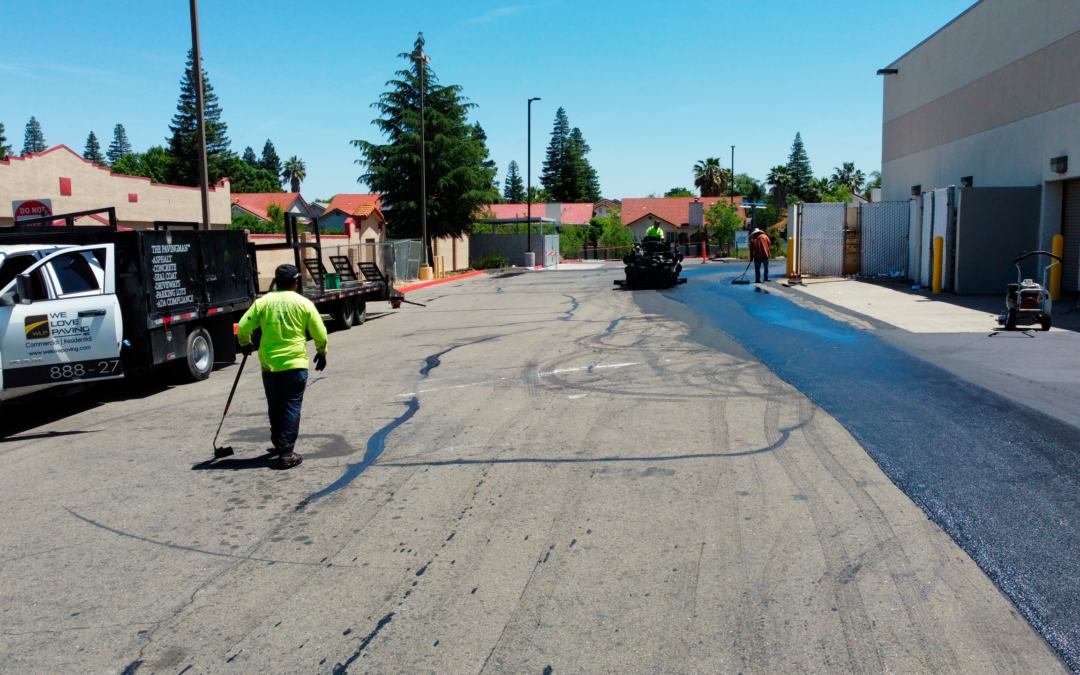Asphalt is a popular paving material known for its durability and flexibility. However, in Sacramento, California, many homeowners and business owners notice that their asphalt surfaces develop cracks more easily than expected. Understanding the reasons behind this phenomenon is crucial for effective maintenance and prevention. In this blog article, we’ll explore the factors that contribute to asphalt cracking in Sacramento’s unique climate and offer tips on how to mitigate these issues.
Climate Factors in Sacramento
Sacramento’s climate plays a significant role in the cracking of asphalt. The city experiences hot, dry summers and cool, wet winters, which can place considerable stress on asphalt surfaces.
Temperature Fluctuations
Thermal Expansion and Contraction: Asphalt expands and contracts with temperature changes. During hot summer days, asphalt can expand, and during cooler nights or winter days, it contracts. This constant movement can cause stress on the asphalt, leading to cracks over time.
UV Radiation
Sun Damage: Sacramento’s abundant sunshine can cause the asphalt to deteriorate. UV rays break down the binder in asphalt, making it more brittle and susceptible to cracking. This process, known as oxidation, reduces the flexibility of the asphalt and increases the likelihood of cracks forming.
Rain and Moisture
Water Infiltration: The cool, wet winters in Sacramento can lead to water seeping into small cracks in the asphalt. When temperatures drop, this water can freeze and expand, causing the cracks to widen and deepen. This freeze-thaw cycle is a major contributor to asphalt deterioration.
Other Contributing Factors
Beyond the climate, several other factors can contribute to the rapid cracking of asphalt in Sacramento.
Subgrade Issues
Poor Base Preparation: A weak or improperly prepared subgrade can lead to uneven settling and stress on the asphalt surface. Ensuring a well-compacted and stable base is essential for preventing cracks.
Heavy Traffic Loads
Excessive Weight: Constant exposure to heavy vehicles and traffic can cause the asphalt to flex and weaken, leading to cracks. This is especially relevant for commercial areas with frequent use by large trucks and buses.
Improper Installation
Low-Quality Workmanship: The quality of the asphalt installation plays a critical role in its longevity. Poor compaction, inadequate thickness, and incorrect mixing of asphalt can all lead to premature cracking.
Lack of Maintenance
Neglected Repairs: Small cracks, if not addressed promptly, can grow into larger issues. Regular maintenance, including crack sealing and sealcoating, is crucial for extending the life of asphalt surfaces.
Mitigating Asphalt Cracking
While the factors leading to asphalt cracking in Sacramento are numerous, there are several steps that can be taken to mitigate these issues.
Regular Maintenance
Crack Sealing: Sealing cracks as soon as they appear can prevent water from infiltrating the asphalt and causing further damage. Use high-quality sealants to ensure effective and long-lasting repairs.
Sealcoating: Applying a sealcoat every few years can protect the asphalt from UV radiation, moisture, and wear. Sealcoating acts as a barrier, slowing down the oxidation process and keeping the asphalt flexible.
Proper Installation
Hire Professionals: Ensure that your asphalt is installed by experienced professionals who follow best practices for base preparation, compaction, and layering. Quality installation is key to preventing premature cracking.
Adequate Drainage
Water Management: Design your asphalt surfaces with proper drainage systems to prevent water pooling and infiltration. Keeping water away from the asphalt base is crucial for maintaining its integrity.
Temperature Considerations
Thermal Adaptations: Use asphalt mixes designed to handle the temperature extremes of Sacramento. These mixes can be more resistant to thermal expansion and contraction, reducing the risk of cracking.
Traffic Management
Load Distribution: In areas with heavy traffic, consider reinforcing the asphalt with thicker layers or using materials designed for high-load applications. Distributing the weight more evenly can help reduce stress on the surface.
Conclusion
Asphalt cracking is a common issue in Sacramento due to the region’s climate, traffic conditions, and other factors. Understanding why asphalt cracks and taking proactive steps to address these causes can significantly extend the lifespan of your asphalt surfaces. Regular maintenance, proper installation, and effective drainage are key to preventing and mitigating cracks.

